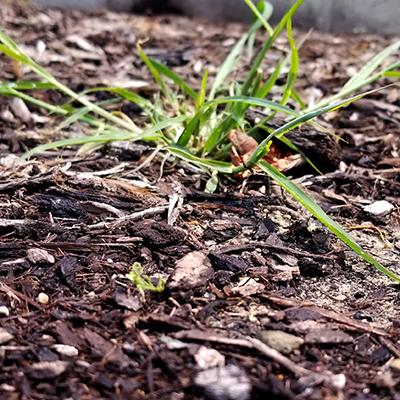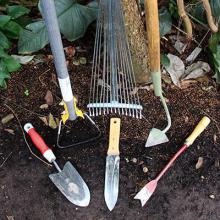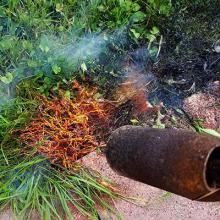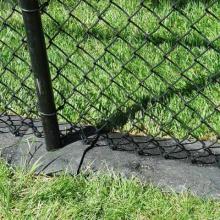
Mulch is commonly used to manage and suppress weeds in landscapes. Mulch primarily suppresses annual weeds by limiting the light exposure needed for germination and establishment. Despite mulch's weed suppressive ability, weeds can still be a problem in this environment, through penetration or deposition. Mulching depth alone can provide adequate weed control. For optimal results:
- Maintain a mulch layer of 2 to 4 inches.
- Reapply organic mulches every 2 to 3 years to compensate for settling due to decomposition.
Avoid over-mulching
In addition to being a waste of money, applying too much mulch can kill your shrubs, trees, and other landscape plants. To avoid plant damage due to over-mulching:
- Do not apply mulch directly against the base of woody plants. Avoid the mulch "volcano".
- Maintain mulch free area around the base of woody plants, 3 to 5 inches around young plants and 8 to 18 inches around mature trees.
- Avoid covering root flares. If root flares are not visible, remove mulch and soil directly adjacent to the tree. Be careful not to damage the tree.
Prevent
Before mulching, clear weeds from the area and cart them away. Maintain a 2 to 4 inch mulch layer to minimize germination and emergence of annual weeds. Note: Mulch can be a source of weed seeds and other propagules. Avoid applying mulch contaminated with weed seeds, tubers, or nutlets. Source mulch from reputable vendors that offer weed-free mulch.
Control Options Details
Mechanical Control
Non-chemical control for mulched environments is primarily limited to mechanical weed control. Hand weeding and hoeing are good ways to manage weedy mulched areas. Hula hoes (also called stirrup hoes) and diamond hoes are good tools for weeding under mulch, but work best on small to medium-sized weeds.
Though landscape fabric may be an attractive option to prevent weeds from penetrating the mulch layer, hoeing weeds that break through this barrier can be difficult without catching, pulling up, and otherwise damaging the landscape fabric itself.
Flame weeding is not appropriate for mulched areas as mulch can pose a fire hazard.



